M-Shaped Conformal Antenna with FSS Backing for Gain Enhancement †
Abstract
:1. Introduction
2. Antenna Modelling
3. Results and Analysis
4. Conclusions
Author Contributions
Funding
Institutional Review Board Statement
Informed Consent Statement
Data Availability Statement
Conflicts of Interest
References
- Chaitanya, A.V.; Jayaprada, R.; Pavani, M. Circular Monopole Slotted Antenna with FSS for High Gain Applications. ARPN J. Eng. Appl. Sci. 2016, 11, 1–7. [Google Scholar]
- Siva Prasad, B.; Mallikarjuna Rao, P.; Madhav, B.T.P. Coplanar wave guide fed fork shaped frequency reconfigurable antenna for LTE, Wi-Fi and WLAN applications. Int. J. Eng. Technol. 2017, 7, 366–375. [Google Scholar] [CrossRef]
- Bora, P.; Pardhasaradhi, P.; Madhav, B.T.P. Design of Microstrip Patch Antenna Based on FSS for 5G and WiMAX Applications. J. Nano Electron. Phys. 2021, 13, 1–4. [Google Scholar] [CrossRef] [PubMed]
- Srilatha, K.; Madhav, B.T.; Anil Babu, B.; Rishikesh Raj, M.; Somala, T.; Nimmaraju, V.; Rao, M.C. Design and analysis of jeans based wearable monopole antenna with enhanced gain using AMC backing. J. Phys. Conf. Ser. 2021, 1804, 012189. [Google Scholar] [CrossRef]
- Madhav, B.T.; Jayantth Reddy, K.; Vani, J.; Priyanka, R.R.; Prudhvi Nadh, B.; Rao, M.C. Concentric ring loaded monopole antenna with AMC backed forwearable applications. J. Phys. Conf. Ser. 2021, 1804, 012191. [Google Scholar] [CrossRef]
- Saikumar, K.; Arulanantham, D.; Rajalakshmi, R.; Prabu, R.T.; Kumar, P.S.; Vani, K.S.; Ahammad, S.H.; Eid, M.M.; Rashed, A.N.; Hossain, M.A.; et al. Design and development of surface plasmon polariton resonance four-element triple-band multi-input multioutput systems for LTE/5G applications. Plasmonics 2023, 18, 1949–1958. [Google Scholar] [CrossRef]
- Bandhakavi, S.D.; Boddapati, T.M.; Babu, B.A.; Murthy, K.S. A circularly polarized semi-symmetric curvature slot fractal antenna for gain enhancement. J. Eng. Sci. Technol. Rev. 2021, 14, 116–123. [Google Scholar]
- Devarapalli, A.B.; Moyra, T.; Madhav, B.T. An FSS based broadband elliptical tree shaped antenna with augmented gain for wireless applications. IETE J. Res. 2022, 1–13. [Google Scholar] [CrossRef]
- Badisa, A.; Madhav, B.T.; Srilatha, K.; Rao, M.C.; Das, S. A circularly polarized quad-band wearable textile antenna integrated with triple band AMC Reflector for WBAN applications. Prog. Electromagn. Res. C 2022, 121, 1–18. [Google Scholar] [CrossRef]
- Najumunnisa, M.; Sastry, A.S.; Madhav, B.T.; Das, S.; Hussain, N.; Ali, S.S.; Aslam, M. A metamaterial inspired AMC backed dual band antenna for ISM and RFID applications. Sensors 2022, 22, 8065. [Google Scholar] [CrossRef] [PubMed]
- Badisa, A.B.; Madhav, B.T.; Srilatha, K.; Chillarige, A.V.; Battula, V.; Garimella, C.V. Design and analysis of AMC reflector integrated flexible and compact vehicular antenna for Communication Application. Radioelectron. Commun. Syst. 2022, 65, 411–419. [Google Scholar] [CrossRef]
- Madhav, B.T.P.; Anilkumar, T.; Kotamraju, S.K. Transparent and conformal wheel-shaped fractal antenna for vehicular communication applications. AEU -Int. J. Electron. Commun. 2018, 91, 1–10. [Google Scholar] [CrossRef]
- Madhav, B.T.; Venkateswara Rao, M.; Anilkumar, T. Conformal band notched circular monopole antenna loaded with split ring resonator. Wirel. Pers. Commun. 2018, 103, 1965–1976. [Google Scholar] [CrossRef]
- Usha Devi, Y.; Rukmini, M.S.; Madhav, B.T. A compact conformal printed dipole antenna for 5G based vehicular communication applications. Prog. Electromagn. Res. C 2018, 85, 191–208. [Google Scholar] [CrossRef]
- Devi, Y.U.; Rukmini, M.S.; Madhav, B.T. Liquid crystal polymer based flexible and conformal 5G antenna for vehicular communication. Mater. Res. Express 2018, 6, 016306. [Google Scholar] [CrossRef]
- Usha Devi, Y.; Boddapati MT, P.; Kumar, T.A.; Skc, K.; Pardhasaradhi, P. Conformal printed MIMO antenna with DGS for millimetre wave communication applications. Int. J. Electron. Lett. 2019, 8, 329–343. [Google Scholar]
- Wu, S.; Zhao, A.; Zhao, Y. Wideband dipole antenna and array based on liquid crystal polymer for 5G applications. In Proceedings of the 2019 IEEE Asia-Pacific Microwave Conference (APMC), Singapore, 10–13 December 2019. [Google Scholar]
- Lakrit, S.; Medkour, H.; Das, S.; Madhav, B.T.; Ali, W.A.; Dwivedi, R.P. Design and analysis of integrated Wilkinson power divider-fed conformal high-gain UWB array antenna with band rejection characteristics for WLAN applications. J. Circuits Syst. Comput. 2020, 30, 2150133. [Google Scholar] [CrossRef]
- Mangal, J.; Gour, Y. A high gain planar monopole hexagonal circular slotted patch antenna for ultra-wideband and multiple frequency range applications. In Proceedings of the 2021 International Conference on Control, Automation, Power and Signal Processing (CAPS), Jabalpur, India, 10–12 December 2021. [Google Scholar]
- Vasimalla, Y.; Pradhan, H.S.; Pandya, R.J.; Saikumar, K.; Anwer, T.M.; Rashed, A.N.; Hossain, M.A. Titanium dioxide-2d nanomaterial based on the surface plasmon resonance (SPR) biosensor performance signature for infected red cells detection. Plasmonics 2023, 18, 1725–1734. [Google Scholar] [CrossRef]
- Saikumar, K.; Ahammad, S.H.; Vani, K.S.; Anwer, T.M.; Hadjouni, M.; Menzli, L.J.; Rashed, A.N.; Hossain, M.A. Improvising and enhancing the patterned surface performance of MIMO antenna parameters and emphasizing the efficiency using tampered miniature sizes and layers. Plasmonics 2023, 18, 1771–1786. [Google Scholar] [CrossRef]
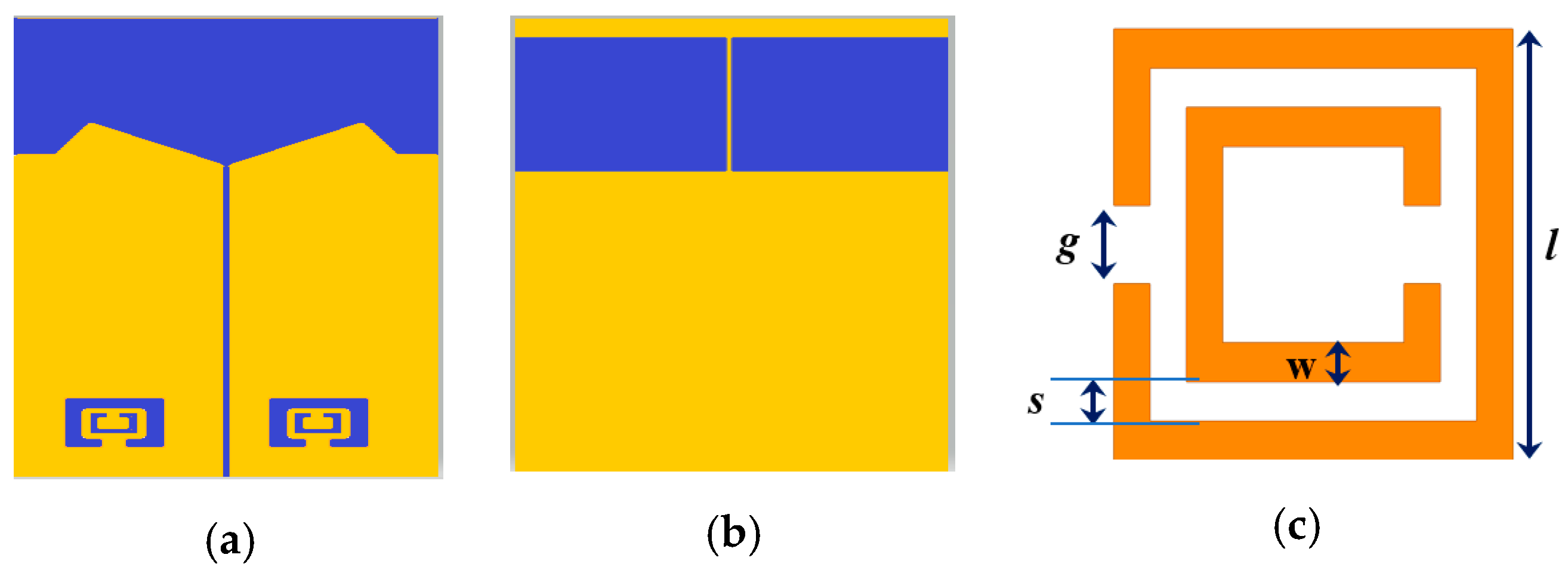

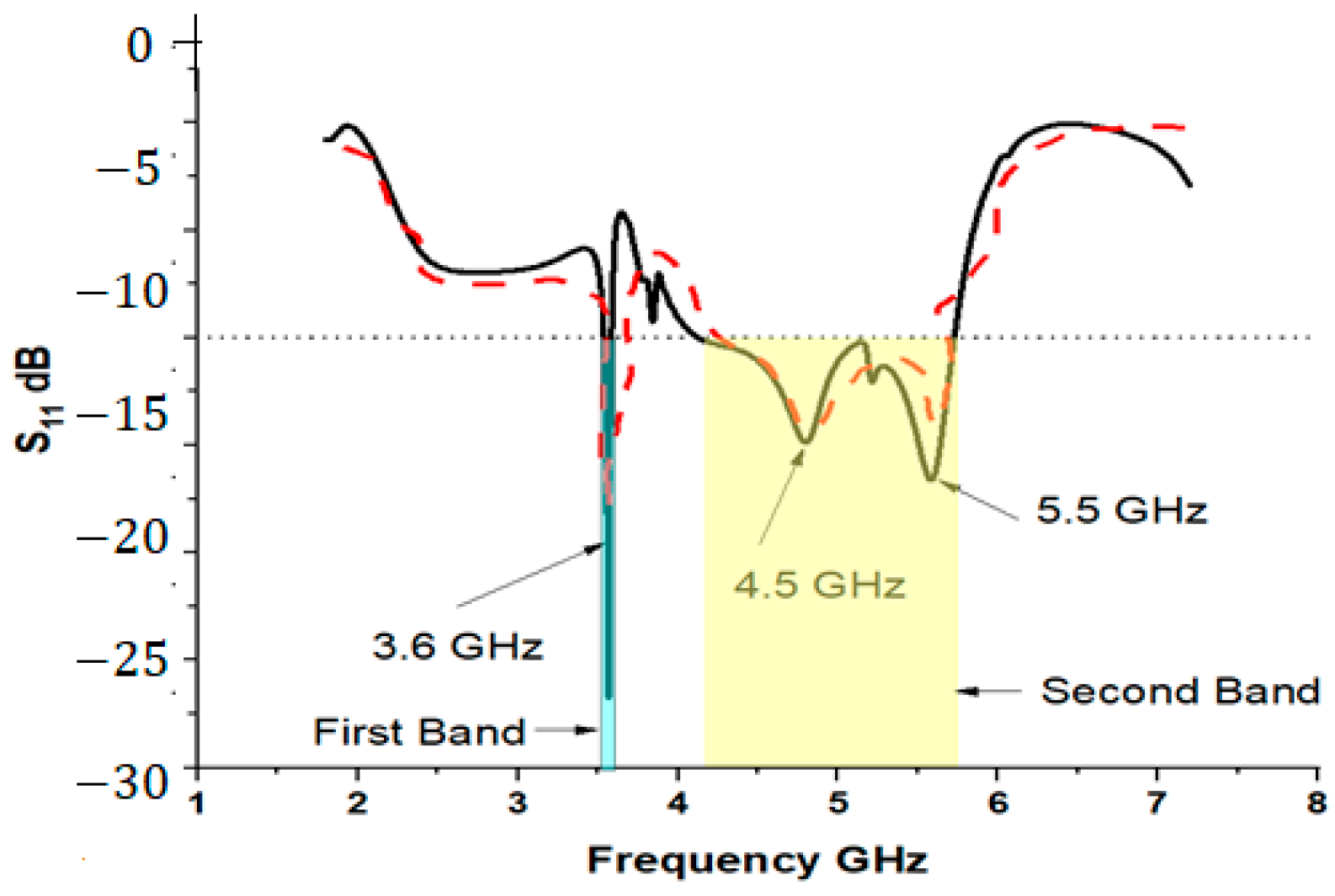
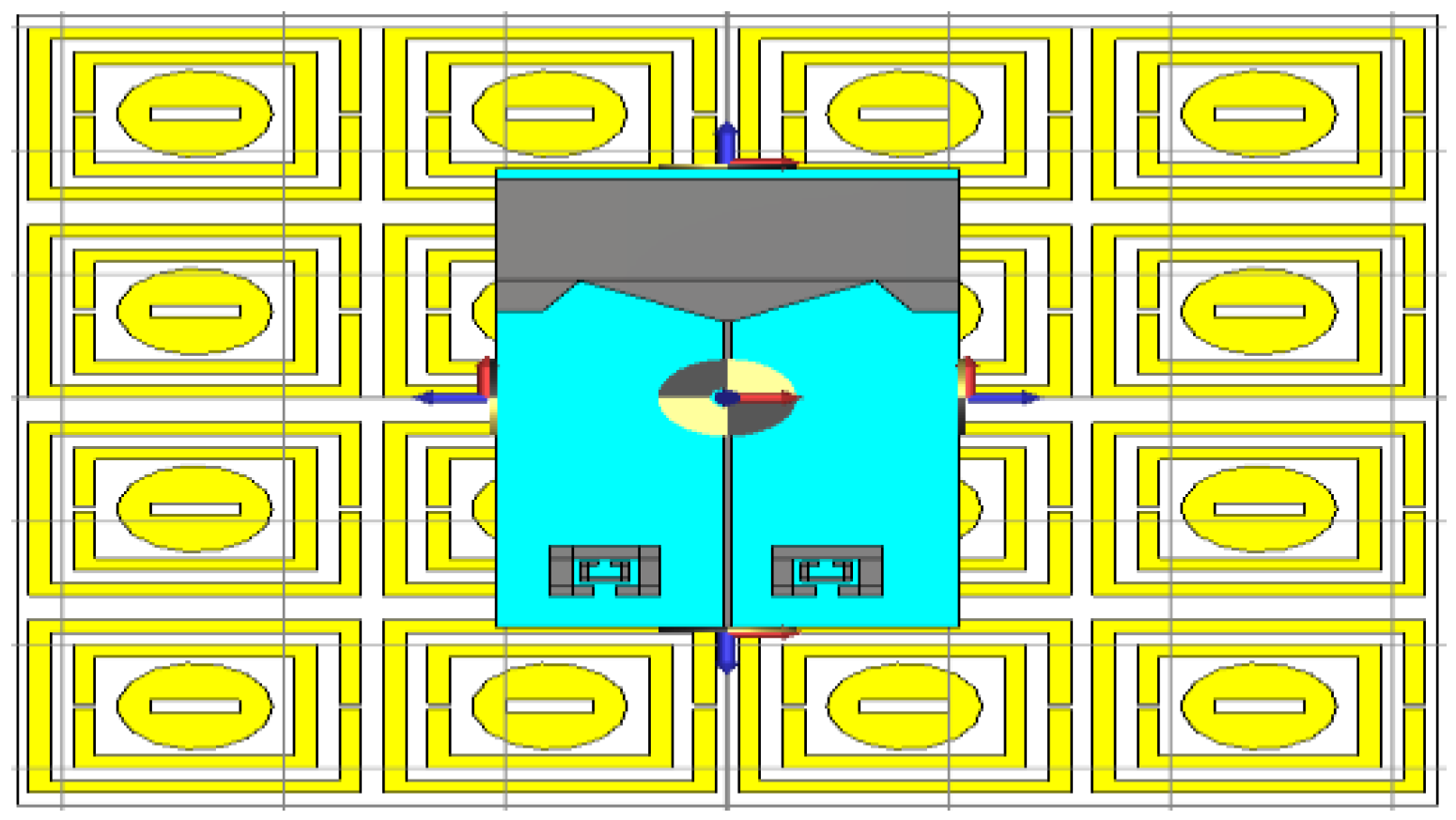

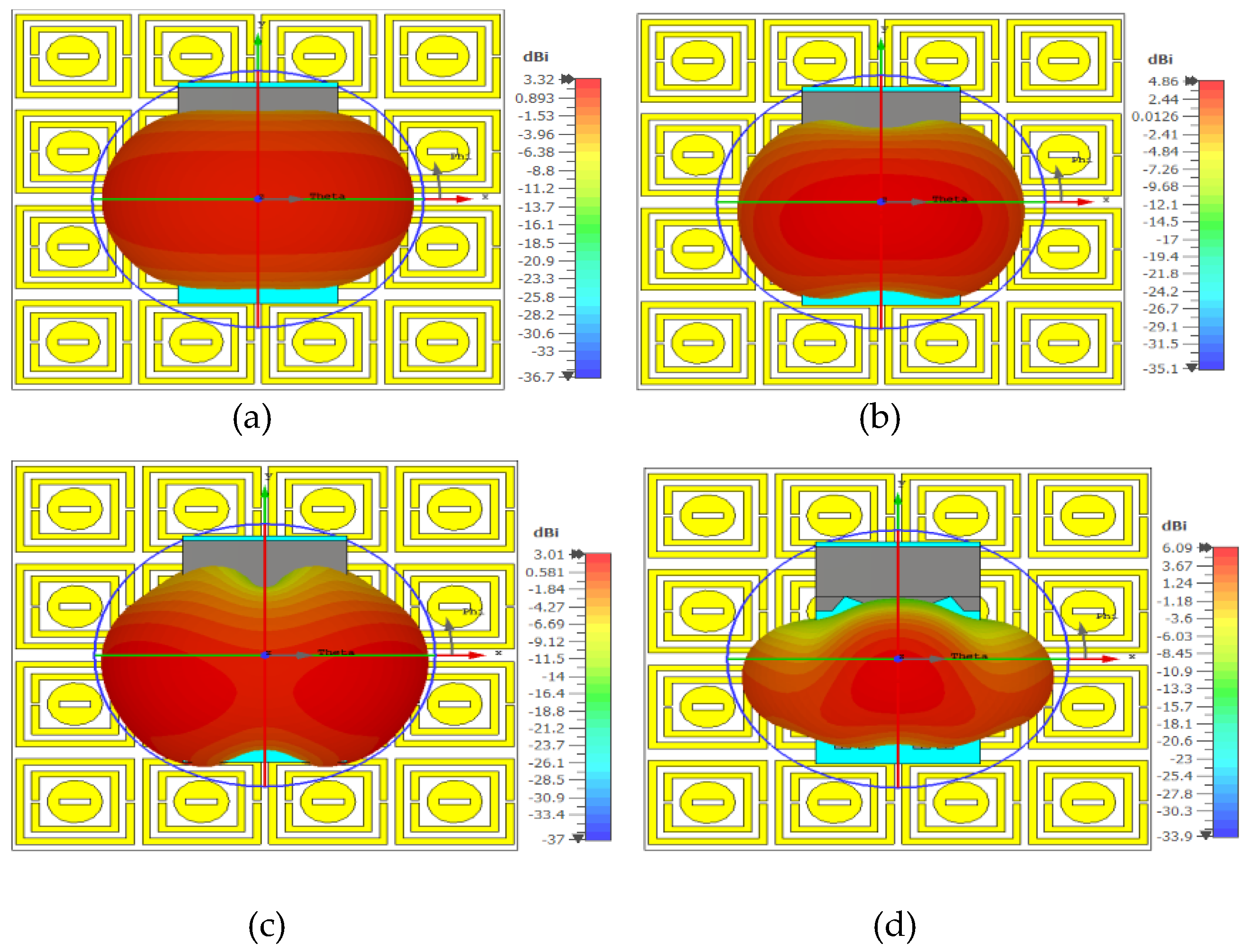
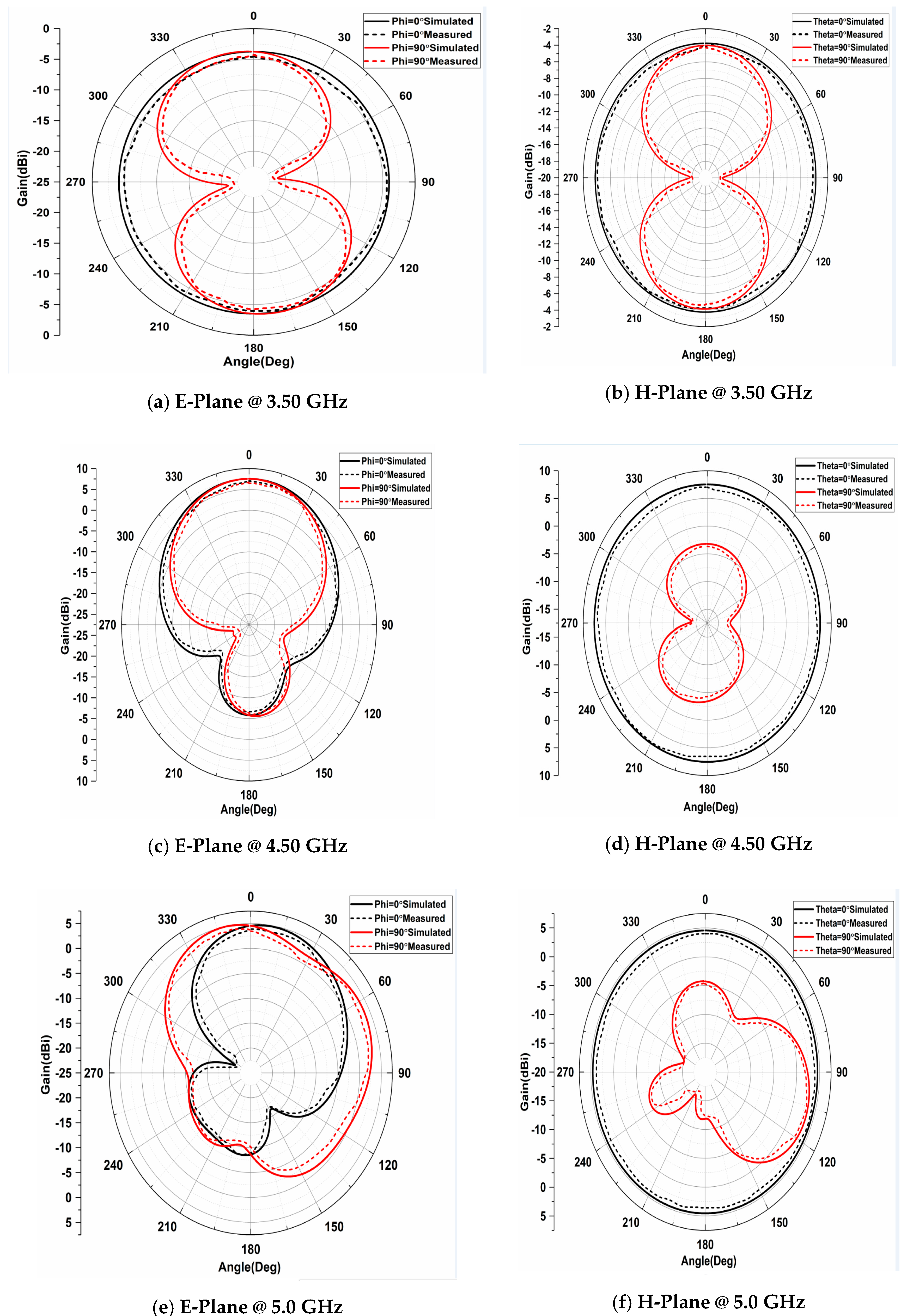
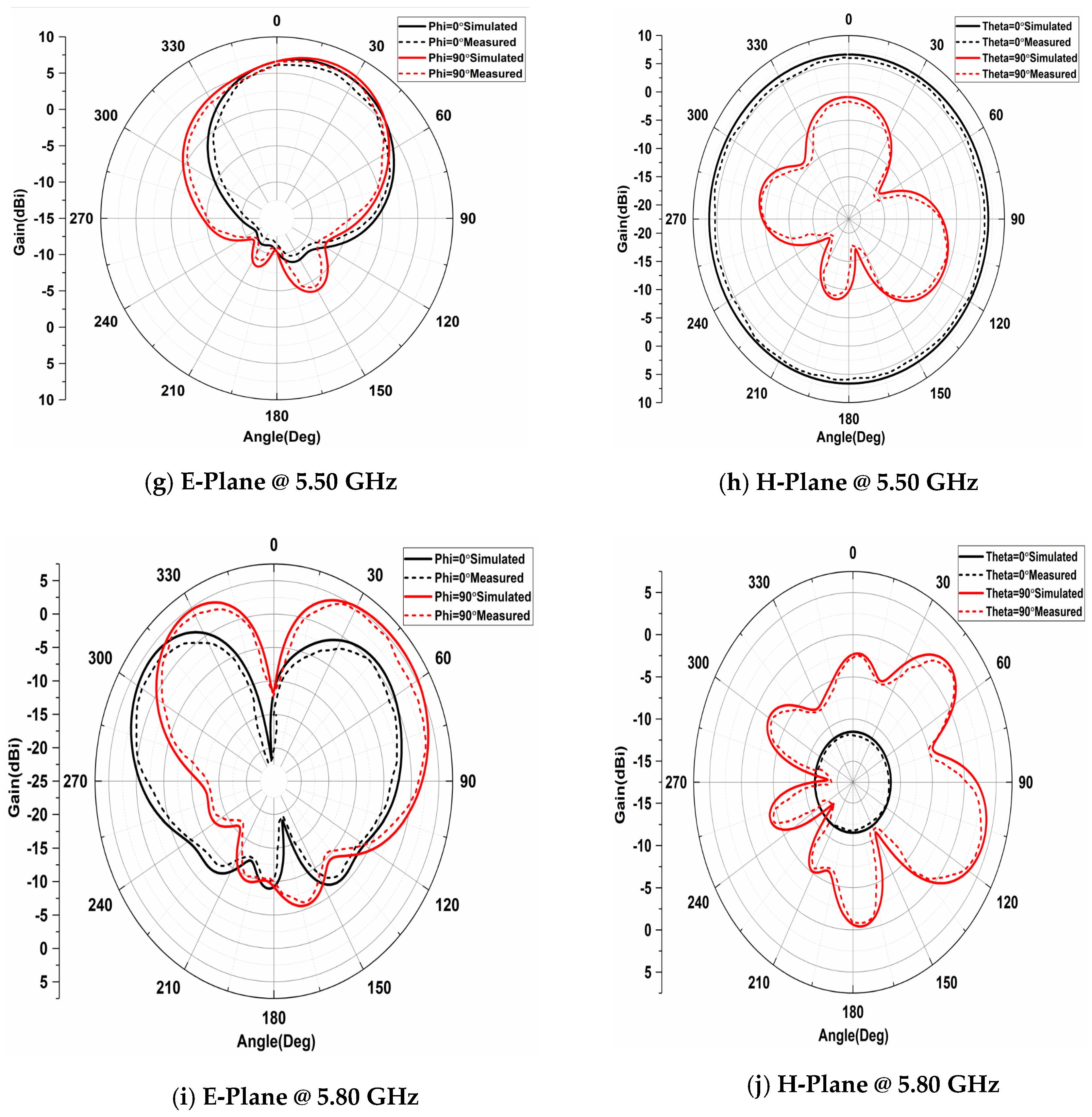


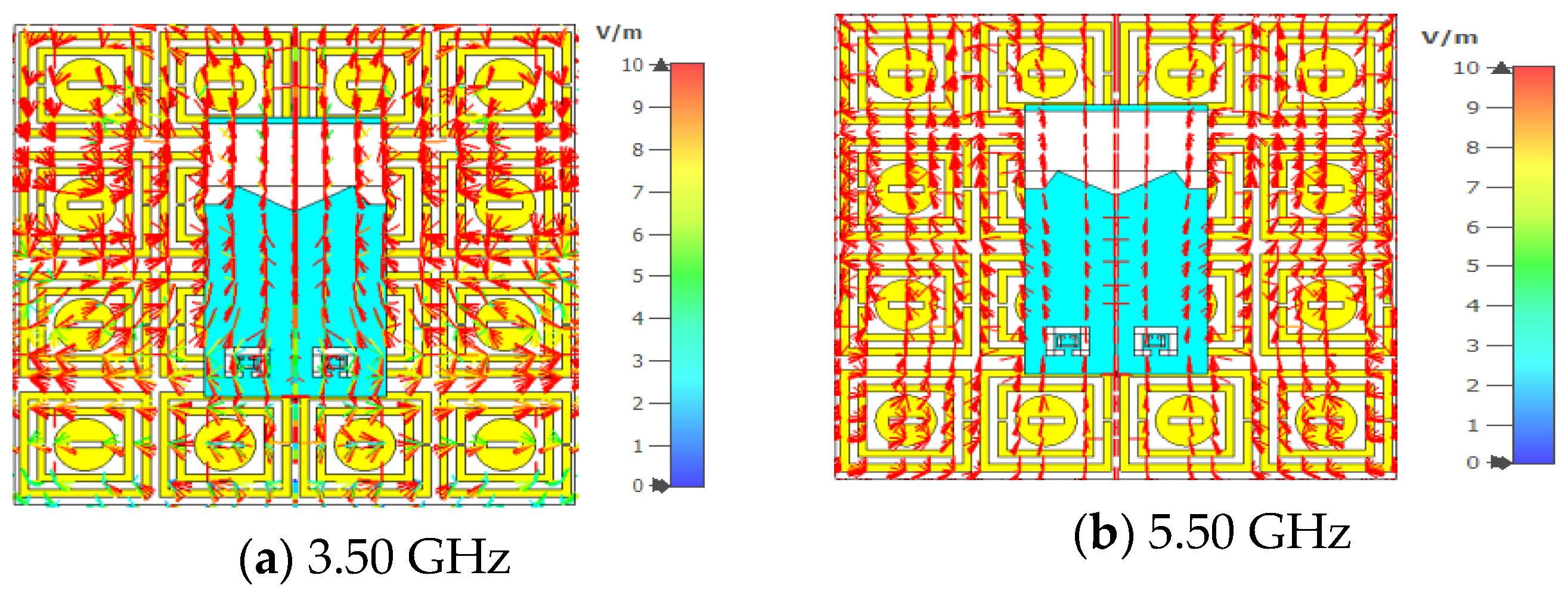


Disclaimer/Publisher’s Note: The statements, opinions and data contained in all publications are solely those of the individual author(s) and contributor(s) and not of MDPI and/or the editor(s). MDPI and/or the editor(s) disclaim responsibility for any injury to people or property resulting from any ideas, methods, instructions or products referred to in the content. |
© 2024 by the authors. Licensee MDPI, Basel, Switzerland. This article is an open access article distributed under the terms and conditions of the Creative Commons Attribution (CC BY) license (https://creativecommons.org/licenses/by/4.0/).
Share and Cite
Lanka, M.D.; Chalasani, S. M-Shaped Conformal Antenna with FSS Backing for Gain Enhancement. Eng. Proc. 2023, 59, 143. https://doi.org/10.3390/engproc2023059143
Lanka MD, Chalasani S. M-Shaped Conformal Antenna with FSS Backing for Gain Enhancement. Engineering Proceedings. 2023; 59(1):143. https://doi.org/10.3390/engproc2023059143
Chicago/Turabian StyleLanka, Madhavi Devi, and Subbarao Chalasani. 2023. "M-Shaped Conformal Antenna with FSS Backing for Gain Enhancement" Engineering Proceedings 59, no. 1: 143. https://doi.org/10.3390/engproc2023059143
APA StyleLanka, M. D., & Chalasani, S. (2023). M-Shaped Conformal Antenna with FSS Backing for Gain Enhancement. Engineering Proceedings, 59(1), 143. https://doi.org/10.3390/engproc2023059143




